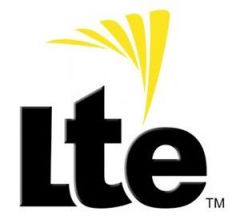[PSA] LTE roam if you want to. Plus (+), it may count as native coverage.
by Tim Yu and Andrew J. Shepherd
Sprint 4G Rollout Updates
Sunday, December 6, 2015 - 2:55 AM MST
S4GRU staff is burning the well past midnight oil for our readers. Overnight, Sprint has unofficially updated its network coverage map tool to include LTE Roaming+ and LTE Roaming acquired via its participation in the Competitive Carriers Association (CCA) Roaming Hub and its own Rural Roaming Preferred Partners (RRPP) program. The coverage tool LTE roaming update clearly is a work in progress -- more on that later. But LTE roaming is finally here.
So, what is the difference between LTE Roaming+ and LTE Roaming?
LTE Roaming+
A simple explanation is that LTE Roaming+ is pseudo native coverage. Sprint users will access certain other LTE networks without roaming restrictions and can treat them as native. Usage does not count against any roaming cap, the only restrictions being the plan type ("unlimited" vs data allotment).
QuoteRoaming in these areas counts as on network usage. Similar level of service as on network, but not all services may be available. More here.
LTE Roaming
LTE Roaming is non native, off network coverage. Usage is counted against Sprint plan roaming caps. Older plans, such as the Everything Data, have a 300 MB limit, while newer plans, like Framily, are limited to 100 MB.
For a specific LTE roaming footprint example, see this coverage tool screenshot centered around Sprint's headquarters in the Kansas City metro. From the LTE roaming legend, the dark green LTE Roaming+ in western Kansas is Nex-Tech Wireless, and you can catch a glimpse of the same LTE Roaming+ from C Spire south of Memphis. The light green is LTE Roaming, all of which appears to be USCC at this point. Elsewhere, you will find LTE Roaming on USCC in its Pacific Northwest, Southeast, and New England regions. There is still map work to do -- note the LTE Roaming legend "@TODO will we have a description here?" More LTE Roaming+ and LTE Roaming operator coverage may be added in the coming hours or days.

Device compatibility?
Due to Sprint's unique LTE Band 25-26-41 network configuration, not all Sprint LTE capable devices will be able to roam on partner networks, which may use different bands, such as Band 2 (PCS 1900 MHz A-F blocks), Band 4 (AWS-1 1700+2100 MHz), Band 5 (Cellular 850 MHz), and Band 12 (Lower 700 MHz)
As such, a CCA/RRPP compatible Sprint triband device, of which many were released in the past year, is the best bet for full network compatibility with partner LTE networks. A CCA/RRPP device will have LTE Band 2-4-5-12-25-26-41 support, which basically covers all of the standard LTE bands in use in the US -- minus VZW Band 13 and AT&T Band 17. No matter, VZW and AT&T presently are not LTE roaming partners with Sprint.
If Multi Frequency Band Indicator (MFBI) is active at the network level, a regular Sprint triband device (Bands 25-26-41) may be able to access some partner networks -- due to Band 25 (PCS 1900 MHz A-G blocks) and Band 26 (eSMR 800 MHz + Cellular 850 MHz) being supersets of Band 2 and Band 5, respectively. However, these triband devices will not roam if the partner network uses Band 4 or Band 12.
An older single band Sprint LTE Band 25 device will be even more restricted. If it can roam at all, it will be limited to partner networks that use Band 2, again assuming MFBI.
In Summary...
A few months ago, Sprint upgraded much off network coverage for most accounts from only CDMA1X to EV-DO. Now, a lot of that same roaming footprint gets elevated a second time to LTE. Sprint LTE, eHRPD/EV-DO, and CDMA1X coverage still will hold highest priority. Whether LTE Roaming+ or LTE Roaming, it will not supersede Sprint eHRPD/EV-DO or CDMA1X signal. But outside of all Sprint native coverage, roaming gets another boost.
LTE roam, roam if you want to.
Sources: Sprint, S4GRU thread
-
 13
13








35 Comments
Recommended Comments